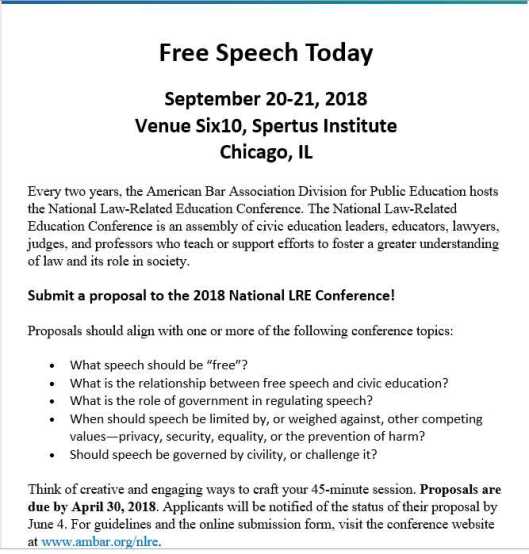The 33-page article, Prompting Deliberation about Nanotechnology: Information, Instruction, and Discussion Effects on Individual Engagement and Knowledge (2017), was written by Lisa M. PytlikZillig, Myiah J. Hutchens, Peter Muhlberger, and Alan J. Tomkins, and published in the Journal of Public Deliberation: Vol. 13: Iss. 2. From the abstract, “Deliberative (and educational) theories typically predict knowledge gains will be enhanced by information structure and discussion. In two studies, we experimentally manipulated key features of deliberative public engagement (information, instructions, and discussion) and measured impacts on cognitive-affective engagement and knowledge about nanotechnology”. Read an excerpt from the article below and find the PDF available for download on the Journal of Public Deliberation site here.
From the introduction…
There are many desirable potential outcomes of participating in public engagements. Learning outcomes are especially important because knowledge is a prerequisite to offering informed policy input, which may make the input more useful and influential (Guston, 2014; Muhlberger & Weber, 2006). Prior research suggests deliberative public engagements, in particular, may improve public understanding of science and technology by providing participants with opportunities to study relevant information as they form their preferences (e.g., Farrar et al., 2010). However, not all studies find positive effects of deliberation (Delli Carpini, Cook, & Jacobs, 2004; Ryfe, 2005), and even when effects are found, it is difficult for researchers to identify the mechanisms responsible (e.g., Sanders, 2012).
Experiments investigating the effects of specific features of public engagement are especially important for advancing theoretical understanding of what features of public engagements work for what purposes and why, and to guide the design of effective engagements (PytlikZillig & Tomkins, 2011). In addition, because of concerns relating to issues of equality and engagement (Benhabib, 2002), it is important to examine potential moderators. Not all publics have equal information or influence relating to political or policy issues, and little research has examined whether certain deliberative mechanisms favor some groups over others (Fraile, 2014; Hickerson & Gastil, 2008; Karpowitz, Mendelberg, & Shaker, 2012).
Deliberative engagements include features such as provision of balanced information, encouragement of deep cognitive engagement, and group discussion (Fishkin & Luskin, 2005). Theory suggests these features may promote increased knowledge and potentially more well-justified attitudes and policy preferences (Chambers, 2003; Mendelberg, 2002). However, there are numerous empirical gaps in these theorized connections. For example, despite the centrality of deep cognitive engagement to deliberative theory, few studies of deliberative practice explicitly measure cognitive engagement, or the variety of other ways people may engage. Even fewer attempt to causally connect different forms of individual engagement to specific deliberative design features and outcomes, such as increased knowledge or understanding.
To begin to fill this gap, in the present studies, we experimentally varied features of deliberation (information, instructions, and discussion), and measured the individual and combined impacts of these features on individual-level engagement and knowledge. Further, we examined potential moderation by two other variables: gender—which is a longstanding basis of political inequality (Benhabib, 2002)—and individual differences in need for cognition (the tendency to enjoy and use effortful and deep thinking processes (Cacioppo, Petty, Feinstein, & Jarvis, 1996)—a variable especially relevant to deliberation.
We conducted our studies in the context of engaging college science students in deliberations about potential ethical, legal, and social implications (ELSI) associated with nanotechnology. While the college classroom context is not representative of the majority of public engagement contexts, it is one such context, and one that facilitates controlled experimentation. In addition, findings from studies of the design of deliberative discussions in this context can specifically improve the use of deliberative practices when helping students consider ELSI implications of new science and technology developments—a practice which is increasingly encouraged (Barsoum, Sellers, Campbell, Heyer, & Paradise, 2013). Finally, findings in this context may suggest possibilities that should be investigated in other public engagement contexts.
Download the full article from the Journal of Public Deliberation here.
About the Journal of Public Deliberation![]()
Spearheaded by the Deliberative Democracy Consortium in collaboration with the International Association of Public Participation, the principal objective of Journal of Public Deliberation (JPD) is to synthesize the research, opinion, projects, experiments and experiences of academics and practitioners in the emerging multi-disciplinary field and political movement called by some “deliberative democracy.” By doing this, we hope to help improve future research endeavors in this field and aid in the transformation of modern representative democracy into a more citizen-friendly form.
Follow the Deliberative Democracy Consortium on Twitter: @delibdem
Follow the International Association of Public Participation [US] on Twitter: @IAP2USA
Resource Link: www.publicdeliberation.net/jpd/vol13/iss2/art2/

 On the call, NCDD member Linda Ellinor interviewed Paul Cienfuegos who works in the Community Rights movement. Paul set the stage for how things are the way they currently are, by sharing the history of corporate influence in the US, how it has taken sovereignty away from the American people, and some of its effect on the way our democracy operates. He emphasized how, “we the people need to rediscover who we are and this history of corporate influence, in order for us to have the legal authority to create the society we want”.
On the call, NCDD member Linda Ellinor interviewed Paul Cienfuegos who works in the Community Rights movement. Paul set the stage for how things are the way they currently are, by sharing the history of corporate influence in the US, how it has taken sovereignty away from the American people, and some of its effect on the way our democracy operates. He emphasized how, “we the people need to rediscover who we are and this history of corporate influence, in order for us to have the legal authority to create the society we want”.


